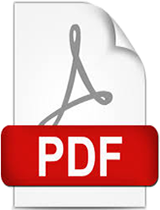
This paper constructs a composite index of corporate governance quality, documents its evolution from 1994 through 2003 in selected emerging and developed economies, and assesses its impact on aggregate and corporate growth and productivity. Our investigation yields three main findings. First, corporate governance quality in most countries has overall improved, alt...

This paper constructs a composite index of corporate governance quality, documents its evolution from 1994 through 2003 in selected emerging and developed economies, and assesses its impact on aggregate and corporate growth and productivity. Our investigation yields three main findings. First, corporate governance quality in most countries has overall improved, alt...

This paper constructs a composite index of corporate governance quality, documents its evolution from 1994 through 2003 in selected emerging and developed economies, and assesses its impact on aggregate and corporate growth and productivity. Our investigation yields three main findings. First, corporate governance quality in most countries has overall improved, alt...

This paper examines the impact of ongoing cross-border integration of securities market infrastructure in the European Union. In particular, it analyzes the regulatory framework that has evolved to deal with the risks associated with cross-border clearing and settlement and concludes that, due to institutionalized deficiencies, the current cross-border regulatory f...

This paper examines the impact of ongoing cross-border integration of securities market infrastructure in the European Union. In particular, it analyzes the regulatory framework that has evolved to deal with the risks associated with cross-border clearing and settlement and concludes that, due to institutionalized deficiencies, the current cross-border regulatory f...

The paper evaluates how increases in banks’ and nonfinancial corporates’ default risk are transmitted in the global economy, using in a vector autoregression model for 30 advanced and emerging economies for the period from January 1996 to December 2008. The results point to two-way causality between bank and corporate distress and to significant global macroeconomi...

The paper evaluates how increases in banks’ and nonfinancial corporates’ default risk are transmitted in the global economy, using in a vector autoregression model for 30 advanced and emerging economies for the period from January 1996 to December 2008. The results point to two-way causality between bank and corporate distress and to significant global macroeconomi...

The paper evaluates how increases in banks’ and nonfinancial corporates’ default risk are transmitted in the global economy, using in a vector autoregression model for 30 advanced and emerging economies for the period from January 1996 to December 2008. The results point to two-way causality between bank and corporate distress and to significant global macroeconomi...




This paper examines financial stability issues that arise from the increased presence of sovereign wealth funds (SWFs) in global financial markets by assessing whether and how stock markets react to the announcements of investments and divestments to firms by SWFs using an event study approach. Based on 166 publicly traceable events collected on investments and div...